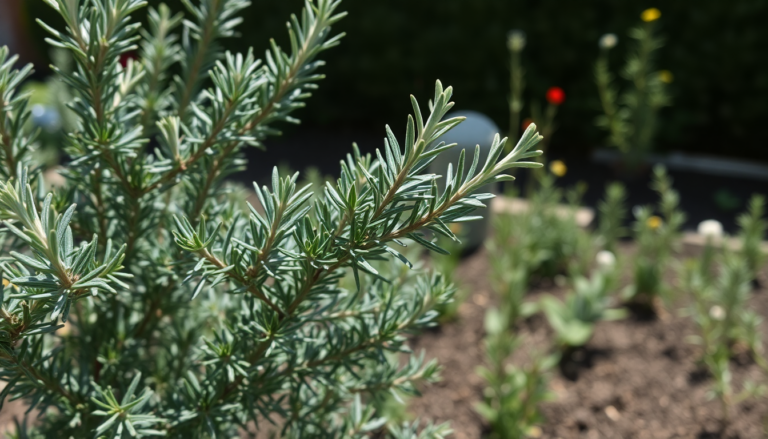Argomenti trattati
Rosemary is not just a delightful herb that enhances your culinary creations; it’s also a stunning addition to any garden. With its aromatic leaves and hardy growth, rosemary is a favorite among both novice and experienced gardeners. This herb is often misunderstood as a high-maintenance plant, but with the right guidance, anyone can cultivate it successfully. In this article, we’ll explore essential tips and techniques from gardening expert Weslie Etienne Pierre, ensuring your rosemary thrives, whether grown indoors or outdoors.
Understanding rosemary’s growth requirements
Native to the Mediterranean, rosemary (Rosmarinus officinalis) thrives in bright, sunny conditions. This perennial evergreen can grow as tall as six feet and spread up to four feet wide, depending on the variety. Unlike many other herbs, rosemary prefers full sunlight and should be planted away from shady areas, like under trees. If you’re growing it indoors, aim for a south-facing window that receives ample sunlight throughout the day. Pierre emphasizes that rosemary requires at least six hours of direct sunlight daily; otherwise, it may become weak and spindly.
Rosemary is also drought-tolerant once established, making it a great option for those living in warmer climates or with busy lifestyles. In USDA Hardiness Zones eight and above, you can enjoy this herb year-round. For gardeners in colder areas, bring your rosemary inside as temperatures begin to drop, ideally before nighttime lows hit the forties. Pierre recommends waiting until after the last frost to plant your rosemary outdoors, or even holding off for an extra week to ensure its safety.
Soil and watering needs for healthy rosemary
When planting rosemary, the soil type plays a crucial role in its overall health. This herb prefers a sandy, well-draining soil mix that mimics its native habitat. While rosemary can tolerate poor soil conditions, it thrives in a rich, sandy mixture. If your garden contains heavy clay, consider growing rosemary in pots. Using unglazed terracotta pots is ideal, as they allow excess moisture to evaporate. Ensure that your container has drainage holes to prevent soggy roots, which can lead to root rot.
While rosemary prefers drier conditions, regular watering is essential, especially in the absence of rain. Water your plant every few days, allowing the soil to dry out slightly between waterings. For indoor rosemary, check the soil moisture by inserting your finger into the pot. If the soil clings to your finger, wait a day or two before watering again. Be mindful that rosemary can develop powdery mildew in high humidity, but this typically doesn’t harm the plant if you maintain good air circulation around it.
Feeding and pruning your rosemary plant
Unlike many garden plants, rosemary is not a heavy feeder. If planted in the ground in a warm climate, feel free to add compost each spring to provide a nutrient boost. However, for potted rosemary, you may find it grows vigorously without any additional feeding. If you notice your plant struggling, consider giving it a light feed with a balanced fertilizer during the growing season.
Pruning is another important aspect of rosemary care. Regularly trimming the plant not only encourages a bushier growth habit but also helps maintain its shape. For those looking to get creative, you can shape your rosemary into topiary forms, like a Christmas tree, for a fun gardening project. Pierre suggests harvesting rosemary throughout the year to promote branching, ensuring you snip off a few inches from various parts of the plant. If you wish to dry rosemary for later use, gather a few branches, tie them together, and hang them upside down away from direct sunlight to air dry.
Growing rosemary indoors
If space is limited, you’ll be pleased to know that rosemary can thrive indoors with the right care. Follow the same guidelines as outdoor growing but pay particular attention to ensuring your plant receives enough light. Position your rosemary in a bright east, west, or south-facing window. If natural light is insufficient, consider supplementing with grow lights, especially during winter months when daylight is limited. Avoid placing rosemary in north-facing windows, as they typically do not provide enough light. Insufficient light can lead to weak growth and leaf drop, which can be frustrating for indoor gardeners.
In summary, growing rosemary is a rewarding experience that offers both culinary delight and aesthetic pleasure. By understanding its specific sunlight, soil, and water requirements, you can cultivate this versatile herb successfully, whether indoors or outdoors. With a little patience and care, you’ll enjoy the many benefits rosemary brings to your home and garden.

